Kommt mit in die wunderbare Welt des französischen Käses. Mehr als 1000 Sorten gibt es. Davon tragen 46 den Zusatz AOC Apellation d’Origine Contrôlée bzw AOP Apellation d’Origine Protégée, also mit kontrolliertem bzw geschütztem Ursprung. Wie so vieles in Frankreich stammen sie meistens aus einer bestimmten Region. Die Franzosen produzieren übrigens etwa 1 900 000 Tonnen Käse pro Jahr, kaufen fast 590 000 Tonnen und der pro-Kopf-Verzehr liegt bei 25 kg.
Follow me into the amazing world of french cheeses. There is a variety of more than 1000 from what 46 are labeled AOC Apellation d’Origine Contrôlée and/or AOP Apellation d’Origine Protégée. That means that their origine is either controlled or protected. Mostly they are original to a special region, like many things are in france. By the way, the french produce around 1 900 000 tonnes or cheese per year, buy nearly 590 000 t and consume 25 kg per person and year.
In dem Bild unter dem Text hier ist eine feine Auswahl verschiedener Käsesorten. Ich beschreibe sie in der Reihenfolge der Liste und vielleicht findet ihr sie ja auch auf der Karte. Dieser Camenbert ist mit Calvados affiniert und von Paniermehl umhüllt, was ihn wirklich zu einem besonderen Camenbert macht, den man nicht in jedem Supermarkt oder jeder Fromagerie (Käseladen) finden wird. Pouligny Saint Pierre ist ein Ziegenkäse. Der Roquefort war großartig, recht salzig und angenehm frisch. Er wird aus Schafsmilch gemacht und der Blauschimmel wird traditionell aus Brotlaiben gewonnen, die in den Höhlen von Roquefort kontrolliert vergammeln, um es mal beim Namen zu nennen ; ) Weiter geht es mit dem Schafskäse Selles-sur-Cher mit einer Ascherinde. Der Brie war nicht, wie man Brie kennt, also weiß weich und mild, sondern hart, gelb-glasig und recht intensiv. Wie ausgetrocknet. Nicht mein Fall, aber etwas besonderes. Nennt sich Old Black Quality (Brie Noir). Das orangene Dreieck ist ein Maroilles. Falls ihr ‘Willkommen bei den Sch’tis’ gesehen habt, könntet ihr ihn kennen. Ein Käse aus dem Norden, seine Geschmack reicht von intensiv zu sehr intensiv, je nach Reifegrad. Den Livarot erkennt man an den Gradhalmen oder Papierstreifen, die darumgewickelt sind. Der Cantal aus Salers war der einzige Hartkäse und enorm gut.
Let me tell you about the cheeses on the following picture in order of the draw. Then you could be able to find them on the list above. This special Camenbert is affinated with calvados and surrounded by breadcrumbs. Pouligny Saint-Pierre is a goat cheese. The Roquefort was great, quite salty and fresh. It’s made of ewe’s milk and the blue mold that you can find in the cheese grows traditionally inside bread loafs, that are put into the caves of Roquefort. Selles-sur-Cher is a ewe’s cheese (made of sheep’s milk). The Brie was different to Brie like you usually know it. Instead of being white, soft and with a mild taste it was hard, yellow-translucent and with a strong taste. It’s called Brie Noir or Old Black Quality, something really scecial, but well it remined me of an forgotten piece of Brie, found unwrapped after 6 month in the very back of the fridge. Maroilles you may know if you have seen ‘Welcome to the Sticks’. A cheese from the north, its strong taste gets even stronger with maturation. Livarot with culms wrapped around it. And finally Cantal from the Salers region, the onty hard cheese on this plate, and with a great taste.
Cheeses from Picardy region, where I am studying.  (Bray Picard (left), Tomme aux foins (right), rest of the heartshaped Neufchatel (middle) …see here:
(Bray Picard (left), Tomme aux foins (right), rest of the heartshaped Neufchatel (middle) …see here:  (the more mature one is calles Rollot (not on a picture) Das waren einige der Käse, die in Picardie hergestellt werden, das ist die Region, in der ich das Erasmussemester mache. Das Auto voller Lieblingsmitstudenten aus aller Herren Länder, haben wir natürlich die zugehörige Käserei besucht, Rohmilch gekauft und wieder zu Hause dann selbst Käse hergestellt: The car full of my beloved and loudly singing kooks, we even visited this farm, bought raw milk and started our own production.
(the more mature one is calles Rollot (not on a picture) Das waren einige der Käse, die in Picardie hergestellt werden, das ist die Region, in der ich das Erasmussemester mache. Das Auto voller Lieblingsmitstudenten aus aller Herren Länder, haben wir natürlich die zugehörige Käserei besucht, Rohmilch gekauft und wieder zu Hause dann selbst Käse hergestellt: The car full of my beloved and loudly singing kooks, we even visited this farm, bought raw milk and started our own production.
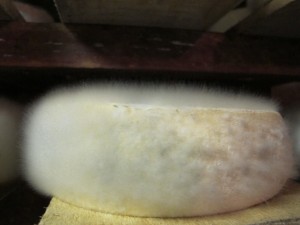

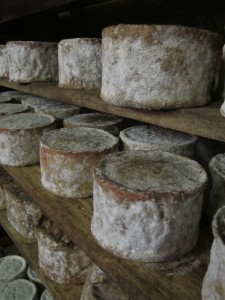

 Jetzt heißt es warten Now we have to wait
Jetzt heißt es warten Now we have to wait
Ziegenkäse aus Korsika This is a goat cheese from Corse  (Brebis Corse)
(Brebis Corse)
I completely fell in love with this one:  Ossau-Iraty in all his variations. Called Pur Brebis it is made of ewe’s milk (but they also offer some with mixed ewe’s and goat’s milk). Maturation varies between 3, 6, 9 and 12 month, the cheese rind with a slightly nutty flavor, sometimes affinated with a special pepper called Piment d’Espelette. And mhhh it’s delicious! In diesen Käse habe ich mich verliebt, er ist unglaublich lecker (aber kauft ihn nicht bereits abgepackt im Supermarkt!) Er heißt Ossau-Iraty, wird im Original aus Schafsmilch hergestellt und ist im Baskenland heimisch. Man bekommt ihn im Reifegrad von 3, 6, 9 und 12 Monaten und teilweise auch mit einer Mischung aus Schafs- und Ziegenmilch. Die Rinde ist wunderbar nussig und manchmal mit einem bestimmten Chilisorte affiniert, die man Piment d’Espelette nennt.
Ossau-Iraty in all his variations. Called Pur Brebis it is made of ewe’s milk (but they also offer some with mixed ewe’s and goat’s milk). Maturation varies between 3, 6, 9 and 12 month, the cheese rind with a slightly nutty flavor, sometimes affinated with a special pepper called Piment d’Espelette. And mhhh it’s delicious! In diesen Käse habe ich mich verliebt, er ist unglaublich lecker (aber kauft ihn nicht bereits abgepackt im Supermarkt!) Er heißt Ossau-Iraty, wird im Original aus Schafsmilch hergestellt und ist im Baskenland heimisch. Man bekommt ihn im Reifegrad von 3, 6, 9 und 12 Monaten und teilweise auch mit einer Mischung aus Schafs- und Ziegenmilch. Die Rinde ist wunderbar nussig und manchmal mit einem bestimmten Chilisorte affiniert, die man Piment d’Espelette nennt.
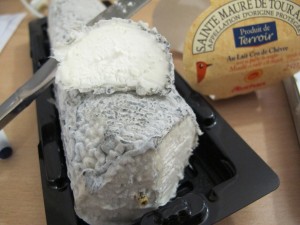 hier ist noch ein Ziegenkäse mit Ascherinde, angenehm mild im Geschmack. This is a goat cheese with a ash rind and a nice and light taste.
hier ist noch ein Ziegenkäse mit Ascherinde, angenehm mild im Geschmack. This is a goat cheese with a ash rind and a nice and light taste.
Und noch was, so gut, dass ich gar nicht dazu kam ein Foto zu machen, so schnell war er verspeist: Fleur de Maquis, ein Ziegenkäse aus Korsika, gehüllt in Rosmarin. A last one for so far, too good to spend time on taking pictures of it: Fleur de Maquis, a goat’s cheese from Corse, wrapped in rosemary. 
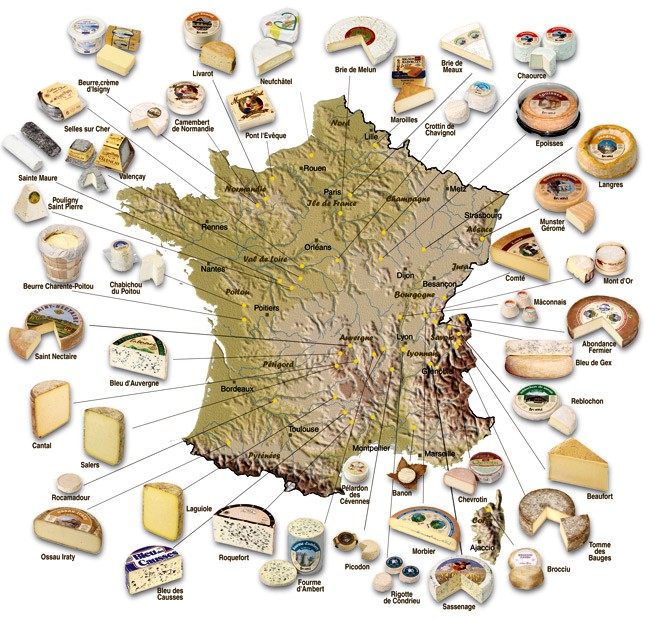

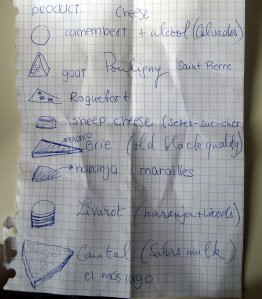
Leave a comment